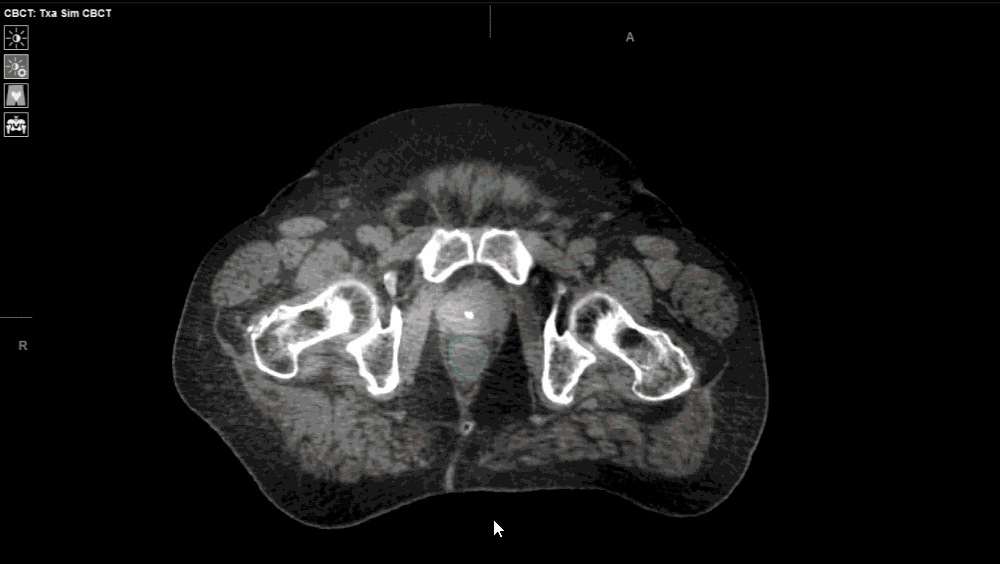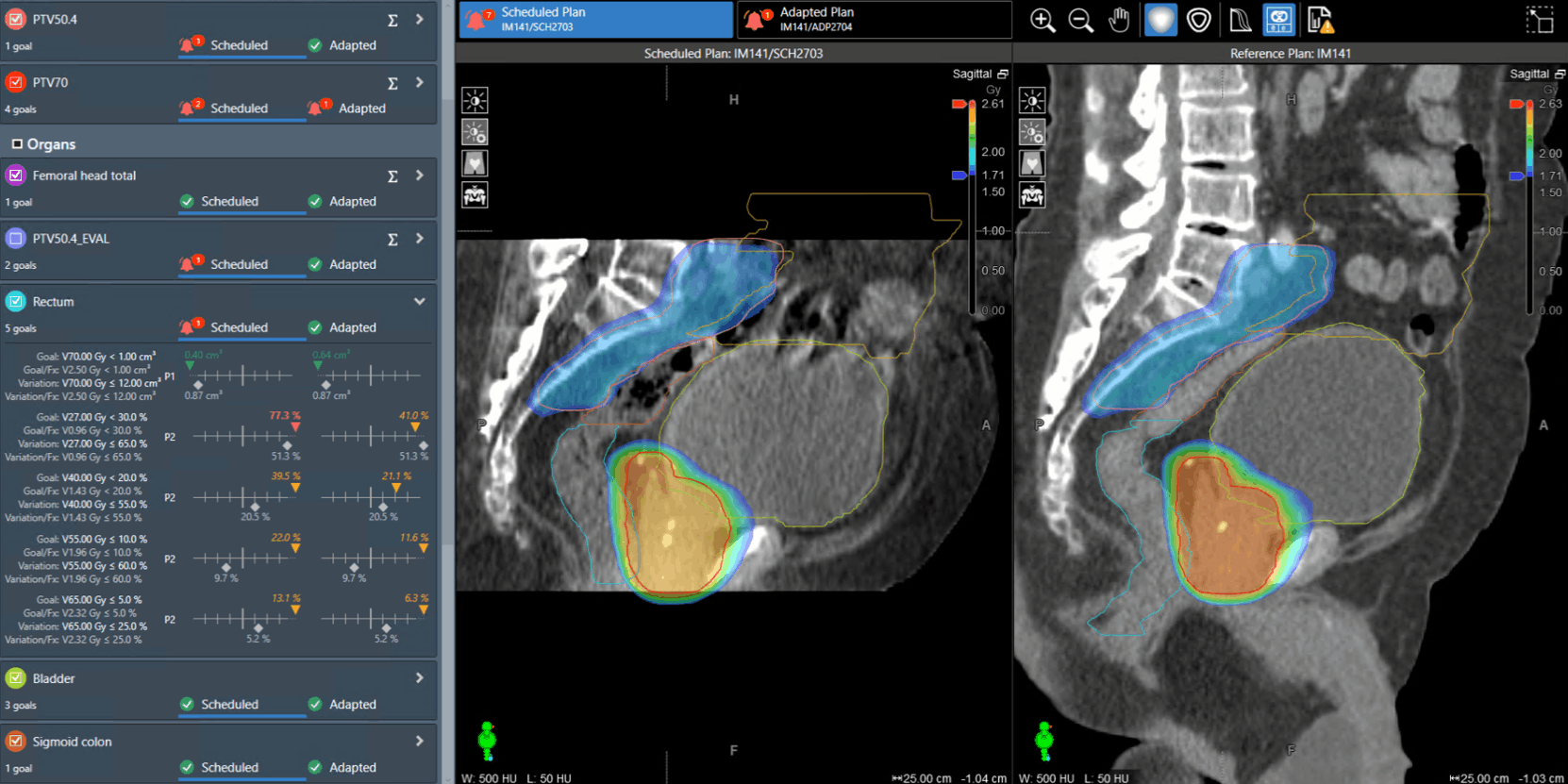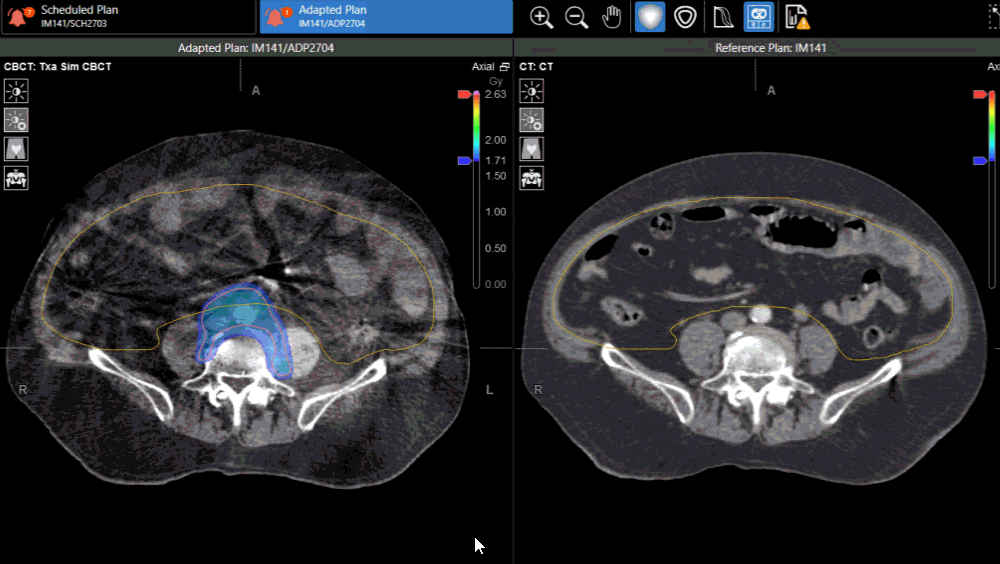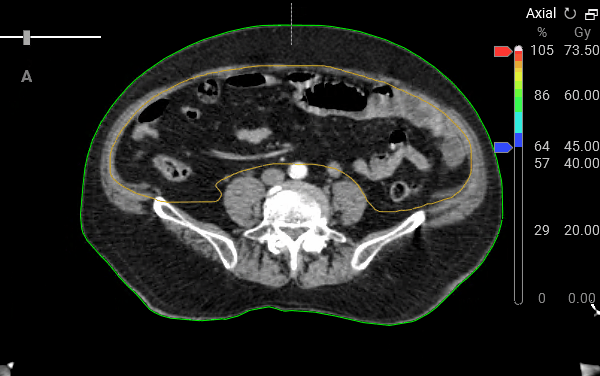Prostate and lymph nodes 70/50.4Gy (NRG GU009 / COMPPARE)
Adaptive Session 1
 |
The adaptive workflow uses an artificial intelligence based (AI) algorithm to contour normal organ structures which influence the daily shape of the target on the newly acquired kV-CBCT. These “influencer” structures are those that are in the closest proximity to the target and have the biggest impact on the shape of common clinical target structures. In this example, the rectum and bladder influencers are being checked and adjusted.
 |
The targets and normal structures are then propagated to the kV-CBCT which are then used to automatically generate two plans. The scheduled plan is obtained by calculating dose from the reference plan, the plan that was approved on the treatment planning CT, on to the current patient anatomy. The adapted plan is created by running a new optimization and calculating dose using the target and normal structure positions on the acquired kV-CBCT. The user then can select the appropriate treatment plan for that session.
 |
The user can view the dose distribution, clinical goals, and DVH when evaluating the scheduled and adapted plans. In this session example, the PTV coverage and dose to the rectum are improved with the adapted plan.
 |
In the image above, the user has maximized the axial view to compare the adapted plan dose distribution to that of the reference plan.
|
Ethos treatment plan report |
Download associated |
DICOM patient export |
|
|
|
Any reference to a "plan study" are simply what the organizers call each case and may not be a "study" in the FDA sense as they may not have been published in a peer reviewed journal.
Varian does not provide medical advice and these are illustrative examples only.
Leading plans by expert planner. Your results may vary.
FOR EDUCATIONAL AND SCIENTIFIC EXCHANGE ONLY – NOT FOR SALES OR PROMOTIONAL USE.
